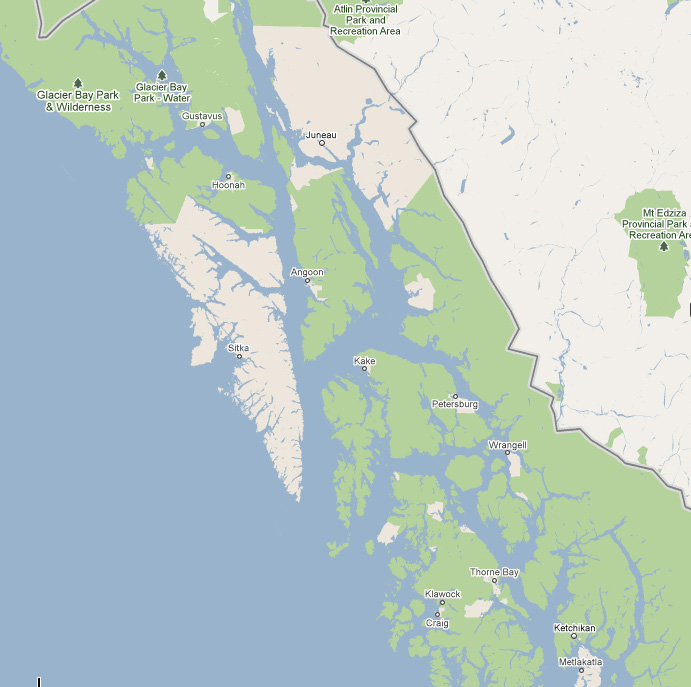

| This travelogue is one family's experience in the inland passage in Alaska. To see a photo in a larger size, just click on it. | |
| Glacier Bay National Park is at the top of Alaska's Inland Passage. It is best known as being home to a series of glaciers that snake through the area's rugged mountains. Here is a typical shot as you enter the bay. |

|
| The mountains are all rugged, snow-capped, granite monuments that are too high for trees to grow. On the frequent overcast days, they are covered with clouds and give the area a black & white flavor. |

|
| The glaciers are sandwiched between the mountains and, quite literally, are rivers of ice. This is the Lamplugh glacier that runs for eight miles to the bay. In a warmer climate, it might be a dramatic waterfall that cascaded into the bay. |

|
| This is a close-up of the Lamplugh glacier. As it moves down to the bay, the glacier picks up rocks and debries, giving it black overtones. It has blue tones because the ice absorbs red and yellow light, leaving the blue end of the spectrum visible. On cloudy days, furthermore, the blue is highlighted even more. |
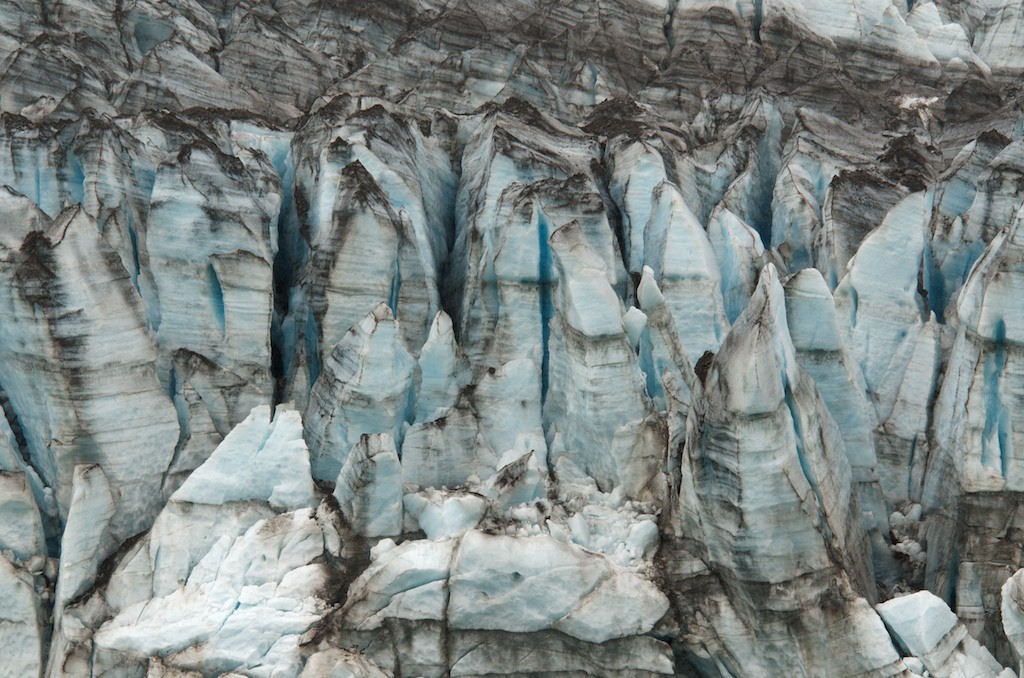
|
| Here is another shot of the dramatic mountains in Glacier Bay. The lower areas have trees and shrubs, while the higher elevations are snow-covered. Clouds also frequently hover mid-way through the mountains, giving them an air of mystery. |
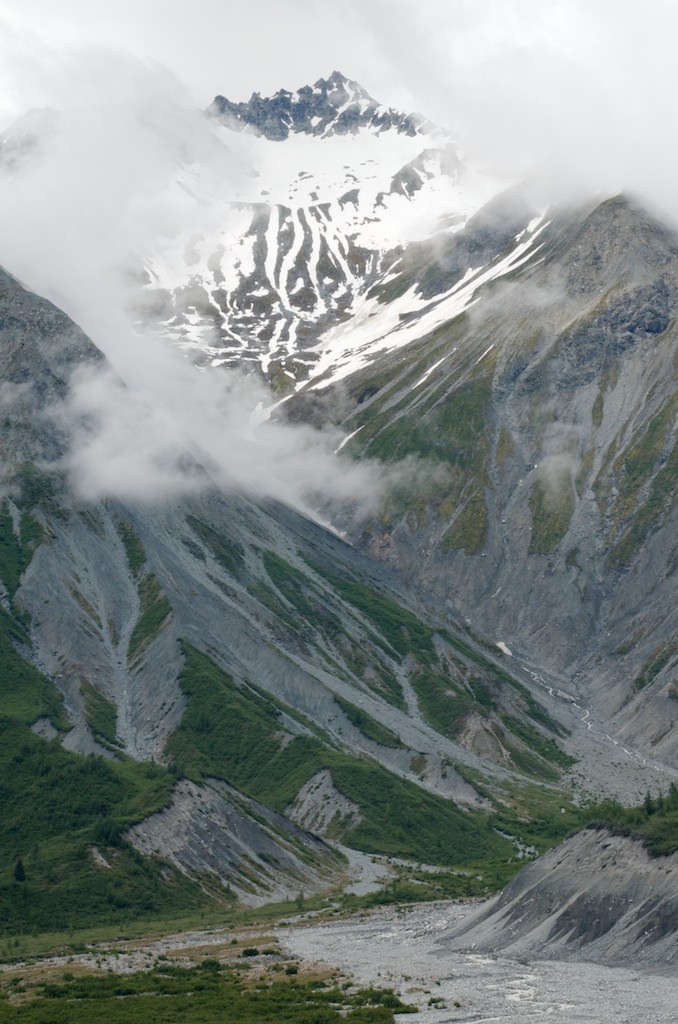
|
| This close-up of the mountain top shows how the area can take on a black & white flavor as the granite mountain's peaks are contrasted with the white snow and gray clouds . |
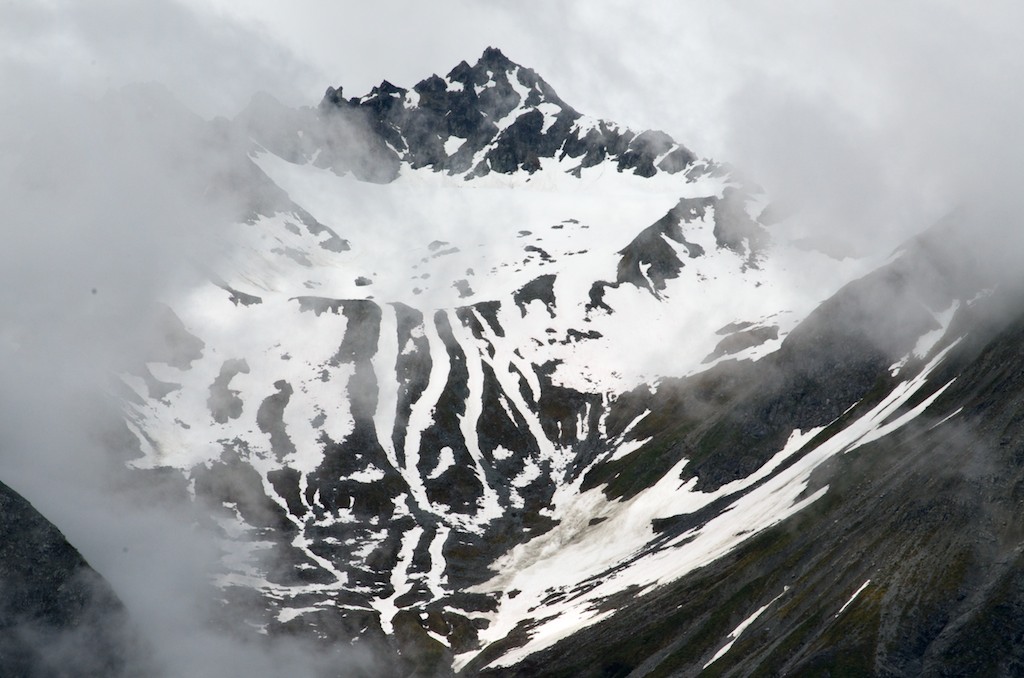
|
| As we moved further into the bay, the sun started to peak out, giving the area a different look. Here is another mountain near the Margerie glacier, which is at the top of Glacier Bay. |

|
| This is a view of the giant Margerie glacier, which stretches 21 miles to the sea from deep within the park. You can see that the side of the glacier is almost black from the dirt, rocks and debries that it has picked up during its slow descent to the bay. |

|
| Here's a close-up of the glacier. The layers of black dirt and rocks give it a marbled quality, and its craggy peaks make it look like an ice sculpture. |

|
| This close-up shows the marbled bottom of the glacier. Note the two small birds flying in front of its face. Overall, the glacier is several hundred feet high. |
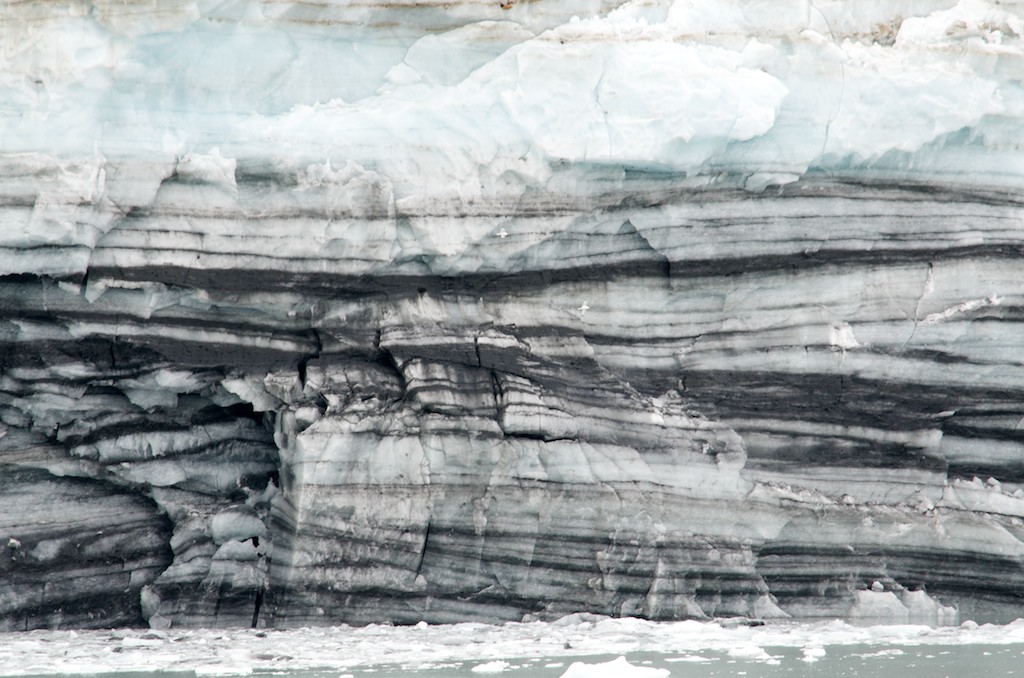
|
| This shot shows a triangular mountain peak behind the glacier. |
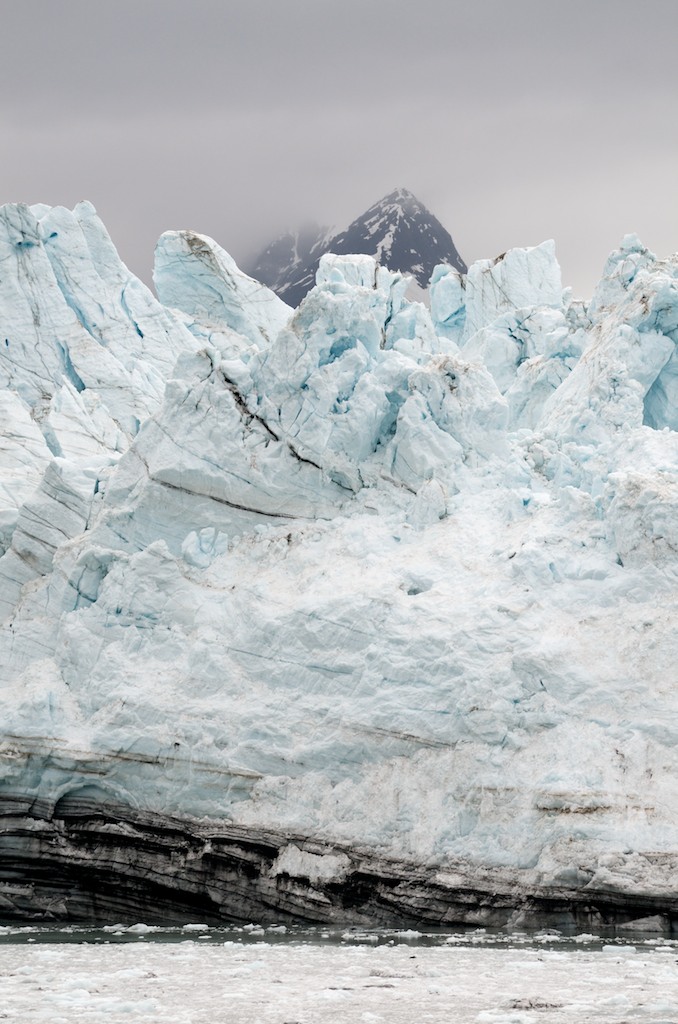
|
| As the boat was moving across the face of the glacier, its various crags played off visually with the triangular peak of the mountain in the distance. Here's a close-up shot of the peak sandwiched between two of the crags as art and nature merge. |
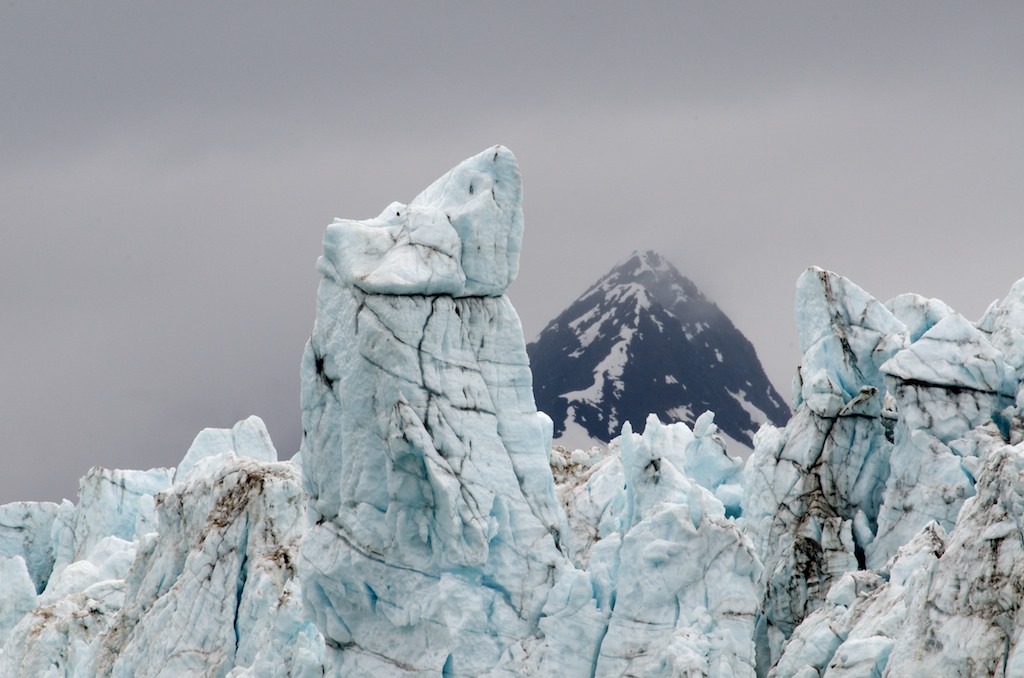
|
| Click here to tour Juneau and the Tracy Arm fjord. |